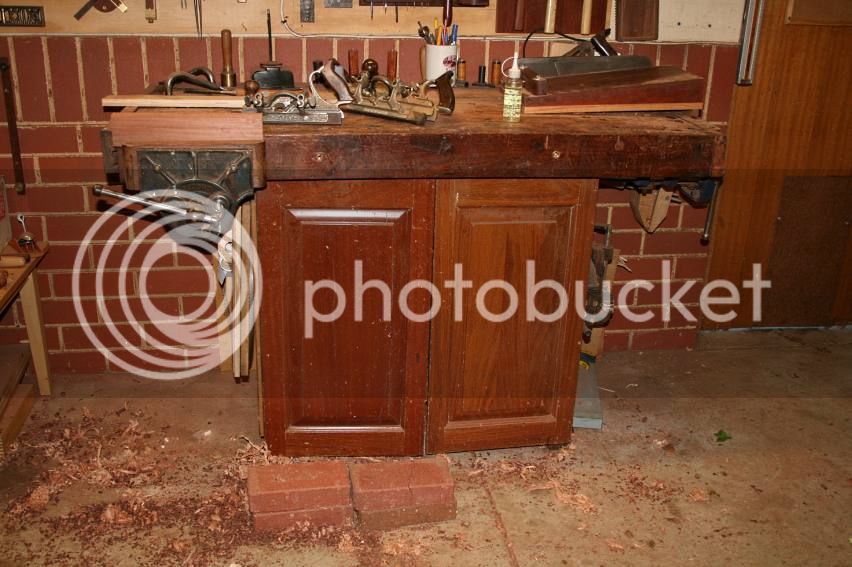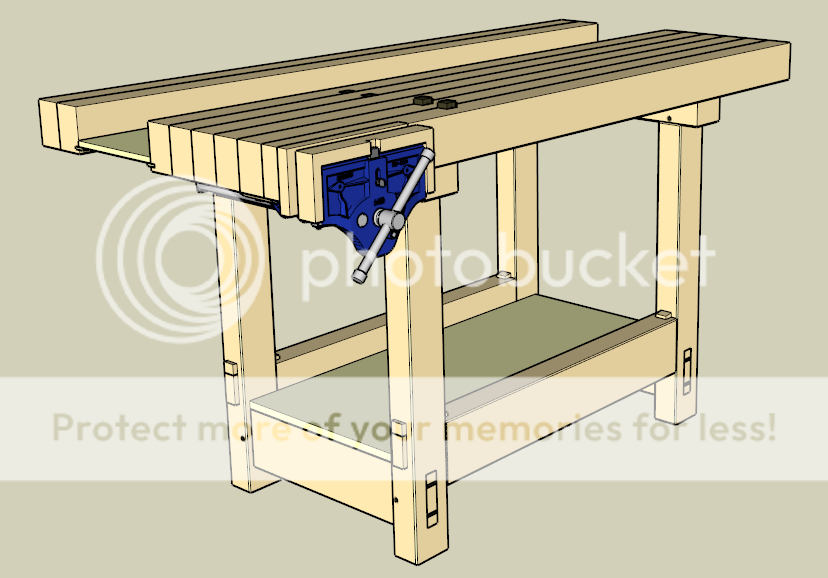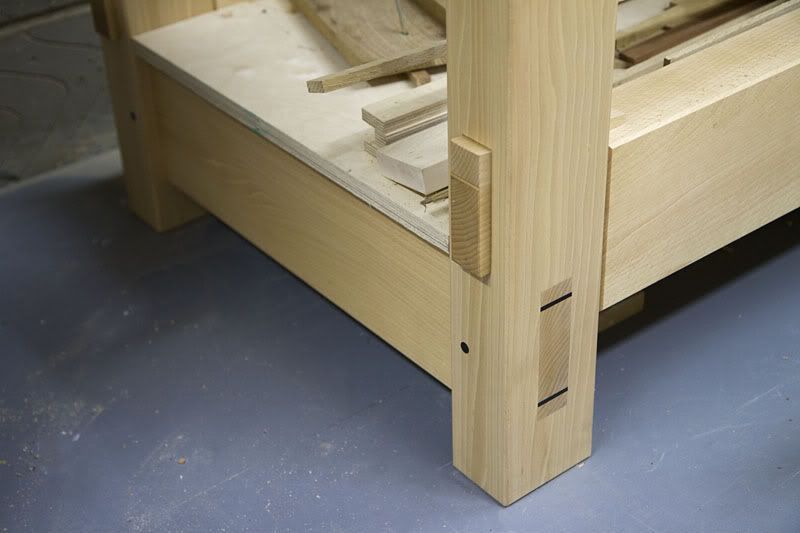Derek Cohen (Perth Oz)
Established Member
So Derek, how high is your workbench and how high from the bottom of your elbows to the floor?
Hi Paul
Bench height is an interesting issue. I suspect that there are UK and US "schools" in this regard.
Here is an extract of a post I made at WoodCentral very recently. David Charlesworth later replied, which I shall tack on afterwards...
I was asked why I chose the Benchcraft tail vise.
The choice of tail vise was made on a number of factors, one of which was the space available for the bench. My bench is placed against a rear wall in my garage/shop. The length of the bench is limited by a cabinet, to the left, and a door, to the right. It comes down to the longer the bench, the shorter the tail vise ... or, the longer the tail vise, the shorter the bench.
The Benchcraft tail vise is notable in that the handle remains in one position, that is, does not "screw out" or "screw in" in length. This translates into a short vise, which means I can build a longer bench. The bench size increases from a little under 5' to a little over 6'. This may not sound a lot, but it is a massive change for me.
I was initially planning on building my own version of the Benchcraft wagon vise. However, when Chris Vesper visited with me last year, he mentioned that he had purchased the BC tail vise. When I asked why he had not simply built his own - since he is a top class machinist - he explained that the design of the vise places great stresses on the mechanism (it screws at the side of the captured dog so as to run close to the edge of the bench), and that to accommodate this, the steel work needed to be heavy duty ... and that the BC was built like the proverbial tank. He did not believe he could replicate it. That sold me on the BC for the tail vise.
I hope to get to the bench dogs tomorrow. These will be rectangular, not round, so I have to prepare them before I glue up the bench top. Why rectangular? Simply because I believe that they will hold work more securely than round dogs. They have a broader face and will not twist. Plus, I wonder how many bench (dog) builders realise that the dogs need to incline slightly (I am using 2 degrees) towards the work piece? This is difficult to do if drilling for a round dog. Yes, it is possible to cut and angle a flat upper section of a round dog, but this thins and potentially weakens the dog, making it more susceptible to bending under stress. A rectangular dog is more work, both in planning and build, but it worth it. This does not preclude one from adding holes for bench accessories, such as hold downs.
So today I plan to finish off the legs. Their dimensions are 5" wide and 3 5/8" deep. I have cut the tenons, and what is left is to prepare one for the leg vise and all for the mortices for the adjoining stretchers. While I will not complete the base until after the top is done (as the length of the stretchers is determined by the dimensions of the top since all facing edges will be co-planar), I need to have everything ready to receive the top once it is glued up just so that I can work on the top.
To decide the length of the legs I first had to finalise the height of the bench. The present bench, which I built 18 years ago, was a remnant from a pre-handtool era. Much modified over the years to better deal with the demands of handtools, it still retained that one feature of the powertool user - height. It is 34" high. Too high for comfortable handplaning at my 178cm/5'10".
Chris Schwarz recommends the "pinky test", that is, the height of the bench should be situated where your pinky joins your hand when your arm is held at your side. I did this and the result was a bench height of 30". To test this out I place a double layer of bricks in front of the bench, and planed a board while standing on the bricks ...

Interestingly, this did feel so much better. It moved the focus of strength from my arms and shoulders to my hips and legs (which is what one is taught in karate). So the length of the legs was calculated for a bench top of approximately 4" thickness (it will end up a little under that), and the tenons were cut. Pictures of the legs tomorrow.
One other point: One change begets other changes. With the lowering of the bench, I shall need to build a new Moxon dovetail vise. The whole idea of the Moxon is to raise the work up high. The existing vise was built for a 34" high bench. To work with the same ease, the new Moxon will need to work 4" higher. Hence a new, taller Moxon.
David's reply ...
I find this bench height question very interesting. My favorite height is 40 inches and I used to be 6'1" tall.
The recipe I came up with, some time ago, was about 4 1/2 inches below the average height of underside of elbows when forearms are held horizontal. People tend to be lopsided ! In fact Jim Kingshott said that cabinetmaking made people lopsided. (and deaf in one ear. machine shop side.)
I can see that wooden plane users might like a couple of inches lower, but if we think of making tasks more height seems generally preferable. Sawing, and horizontal chisel paring both need height and I like to sit on a stool for chopping..
I try to plane almost exclusively with my legs and my right elbow fixed to my ribcage. How else are we to manage long stuff? If a plane is sharp it does not need much downward pressure.
Over the years many students have felt my benches were a bit high when they arrived, but none when they left.
The picture of John Hoffman planing on page 21 of the Lost Art Press reprint of Robert Warings splendid book "The Essential Woodworker" will demonstrate why I disagree whith Chris Schwarz about bench height.
Best wishes,
David
One other relevant post (otherwise you may as well read the entire thread!) was that of Wilbur Pan, who is a physician as well as woodworker ..
I remember the first time I saw one of Jim Kingshott's videos, and noted that when he was using a hand plane, that he mainly moved his body and not his arms, especially when planing longer boards. Using your legs for planing is a really good technique, and lowering a bench helps with that a lot.
I built my bench using the pinky joint rule, and I think it could stand to go down another inch. This is probably because I'm using wooden planes for the most part, which means that my hands are a little higher in relation to the board I'm planing than when I'm using Stanley/Lie-Nielsen type planes.
I will post pics of my build once enough is done to call it a bench.
Regards from Perth
Derek


































